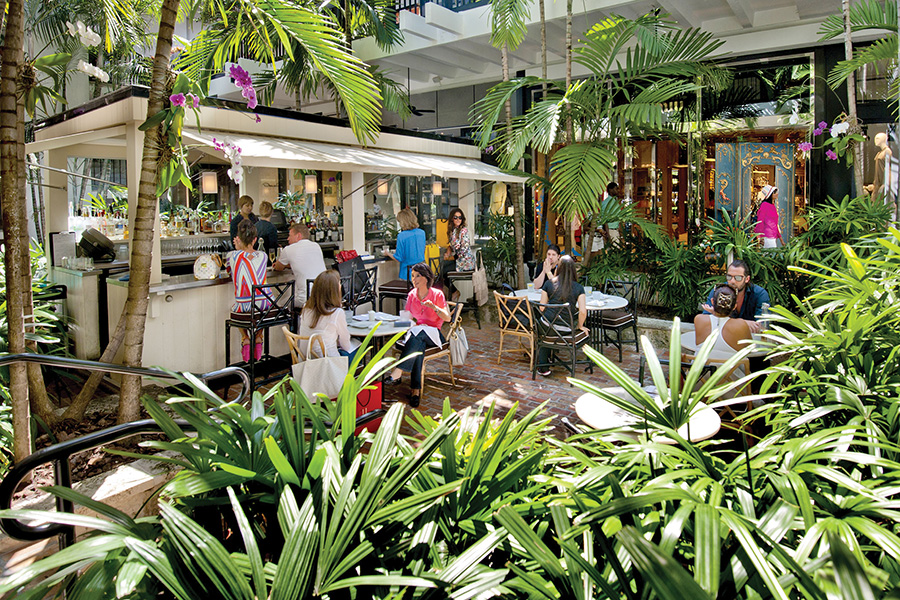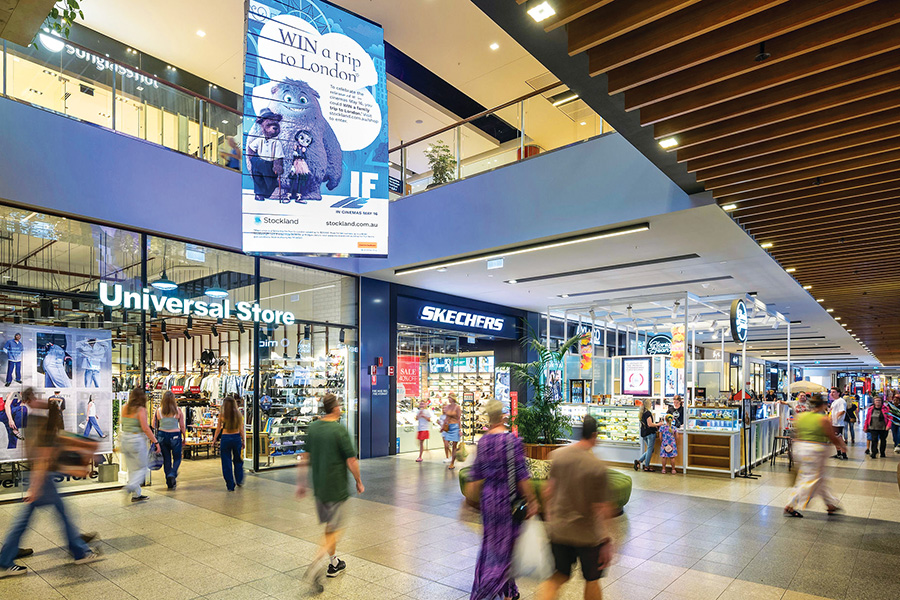Do we rely too much on ‘peak trading times’ – Christmas, Mother’s Day, Easter and so on? Are ‘quiet times’ simply unavoidable and just part of everyday shopping habits? What if those ‘quiet times’ could become busier? How can design and tenant mix change trading patterns?
There are many great contemporary examples of centres that capitalise on self-generated footfall and population, but getting the balance right requires careful consideration of the whole offer, ensuring it all works together in unison at different times for different purposes. And while great examples exist, you only need to scratch the surface to see that there are times when they are empty, quiet, or might feel a little lifeless. A contrived mix of uses could encourage locals to explore ‘elsewhere’, but well-executed places create opportunities to captivate the local populous by sprinkling incidental opportunities for activity – colouring between the lines. It is by no means an easy feat to keep the attention span of the average citizen, in fact it requires a lot of careful curation and ongoing programming.
In this article, I will attempt to unpack a few curious mixed-use principles that help guide our design thinking to shape positive places for the future of successful mixed-use developments.
We often encounter a drive and a greater focus on the peak-use periods that consider the masses, lots of intensity, buzz and spaces filled with people. This is a great end goal to ensure that we comply with planning and building codes, but is not always the utopian essence of a good place. So rather than focusing on the absolute peak periods, when we consider the quieter ‘off-peaks’, we find a greater reason to be genuine with the holistic intention of mixed-use and the purpose for the mix. If we focus on the off-peak and get it right, see it flourish, then imagine what the peak might look like – that’s a good ‘problem’ to have!
Here is the scenario; when we design the utopian mix, environment and ultimate outcome – it will work well during the festive season when weare all taking time off to sit at the local diner or café with our family and friends, with all of our kids queued up at the best-in-class playground and the busker is going off. That’s fantastic and is certainly what we want to achieve – but what does this same place look like when it’s a cold seven degrees outside, the wind is relentless, and the rain is coming in at a 45-degree angle on a Tuesday afternoon at 3 o’clock? Possibly quite a different place with little attractiveness to lure me from my cosy cocoon. In most cases, the 80/20 rule applies – 80% of the time, centres are quiet and not too ‘busy’, while Boxing Day, Lunar New Year, Grand Final weekend, Black Friday and other significant calendar events account for the remaining 20%. The weather is possibly not in favour or aligned with our weekend intentions.
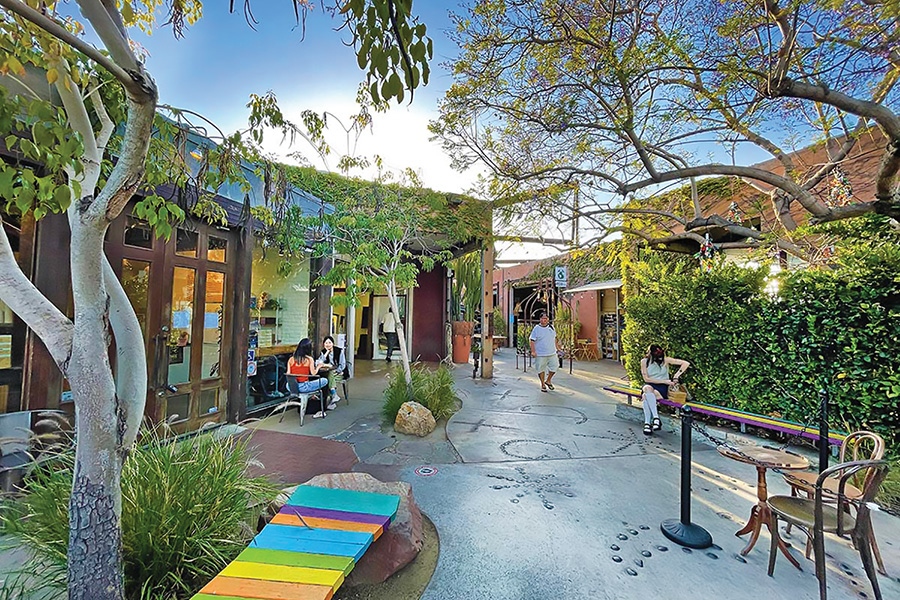
The LAB Anti-Mall Costa Mesa, California
Could we perhaps create special places that focus on the quieter times and enable the popular times to be the exception? How do we make a place feel warm, safe and inviting, when it is perhaps a little quiet?
Here are a few (not necessarily new) ingredients and examples to consider for those quieter times and how they could play a crucial part in making a place feel busy when it really isn’t.
The convenience factor
Convenience is possibly the most important factor for anyone, whether it be shopping for goods, seeking advice, navigating an asset, or engaging with a store assistant. The journey needs to be seamless and rewarding from the point of research to the physical journey and throughout the entire retail experience. A great, out-of-the-box-thinking example of providing convenience during quieter times is bringing day surgeries into retail-based assets; providing a caretaker with the opportunity to linger and dwell in a shopping centre at their leisure while waiting for the patient to be discharged is very smart. I believe we will see many more of these combinations over time as planning rules continue to change and evolve. Not necessarily adding a significant footfall, but rather adding a catchment outside of the primary trade area and bringing a variety of customers to our centres during times that may be off-peak.
Keeping things truly local
Providing an offer, whether retail, commercial or services-based, that provides a truly local flavour is a critical ingredient to the success of place.
The recent pandemic experiences have taught us the value of local and supporting local. This is not to say that we should strictly stick to local but rather that the mix needs to be carefully balanced with offers that go well beyond a local offer.
Local stores and operators have an innate ability to organically adjust to seasonality and micro-trends within their communities and times of day – seeing how tenants adjust their menu or display to respond to customer feedback on an hourly basis sometimes adds vibrancy and joy to the colourful journey through retail, fashion, food and beverage, and other discretionary experiences.
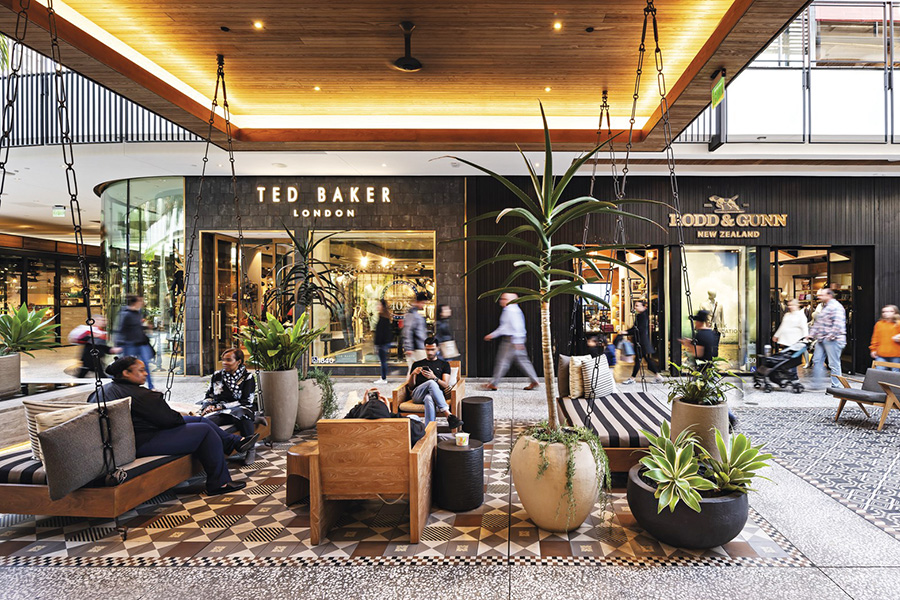
Westfield Century City, Los Angeles, California
Desire in retail
Desire in retail is often connected to exclusivity or luxury, but for a mixed-use precinct it goes a lot further. Desire can be about a genuine intent to be ’a part of it all’ and to belong; the desire to participate, to become a part of something bigger than one’s self, to contribute to the community, to own, to have an identity, and a desire to have it all in one place. Unpacking the desires that are connected to each individual use gives us a glimpse into the deeper connections between uses and their possible combinations. For example, a desire to have daily access to the best local produce and dining options connects very strongly with the potential for the ongoing ‘humble-brag’ all over our socials. This creates enormous potential for retailer followings and a groundswell for external exploration within communities when done right.
Pride and identity
Custodianship, or rather the idea of guarding, protecting and maintaining that which might otherwise not be in your possession, is an interesting notion to consider as an outcome of a place.
When the place around us works well and evokes a sense of belonging, those who transact within it feel a certain sense of custodianship toward it.
Again, when we look at making our mixed-use environments work harmoniously during the quiet off-peaks, then the potential for those who frequent such a place to have a greater sense of ‘our-local’ regardless of stature, bias, or scale, increases with their sense of belonging and desire. A lot can be said about the flow-on effects of custodianship, such as protection and safety.
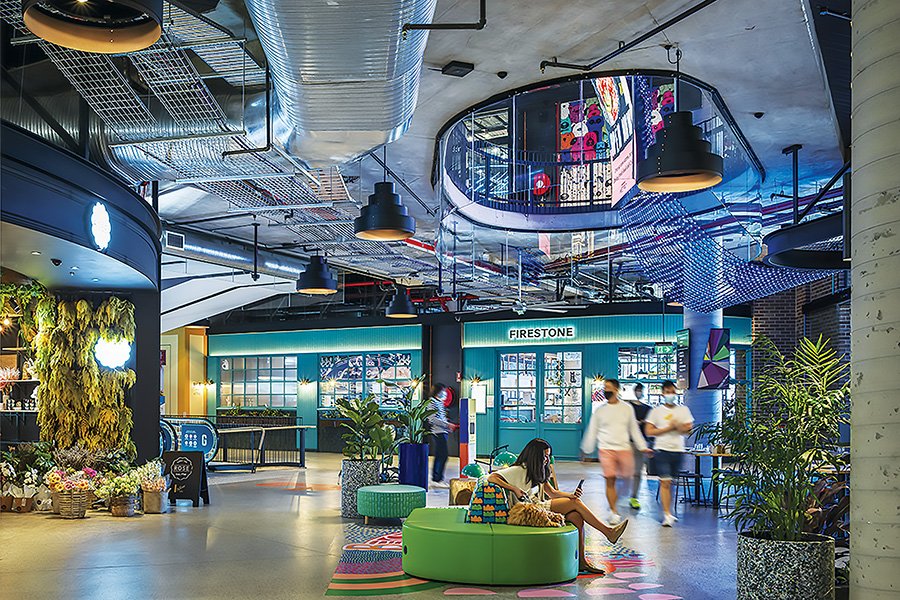
Marrickville Metro, Sydney
A successful blending between the desire to be part of a successful mix and the potential for organic custodianship will inevitably lead to a successful story of pride and identity within the community. This is probably one of the strongest levers we have in the delivery of successful places. Pride and identity of place go a long way in deterring certain unwanted activities by means of passive surveillance. So rather than relying on external shopfronts or deserted balconies to watch the street, a proud community with a strong identity will go a long way to keep it that way.
A place to learn and grow
The opportunity for anyone to develop within the community is huge. Whether it be schools forming part of the mix, tertiary institutions or even the University of the Third Age, mixed-use precincts can provide the possibilities for a broad spectrum of intellectual growth and development. We know that successful education institutions also grow in identity, stature and pride, when it is delivered well. Again, this is a fantastic way to bolster those quiet times of centres where the school pickup becomes a mini burst of activity throughout the week. It could be contemplated that sports facilities be integrated too – some of which are being rolled out around the country already with basketball courts, tennis courts, gymnasium facilities, swimming pools, etc.
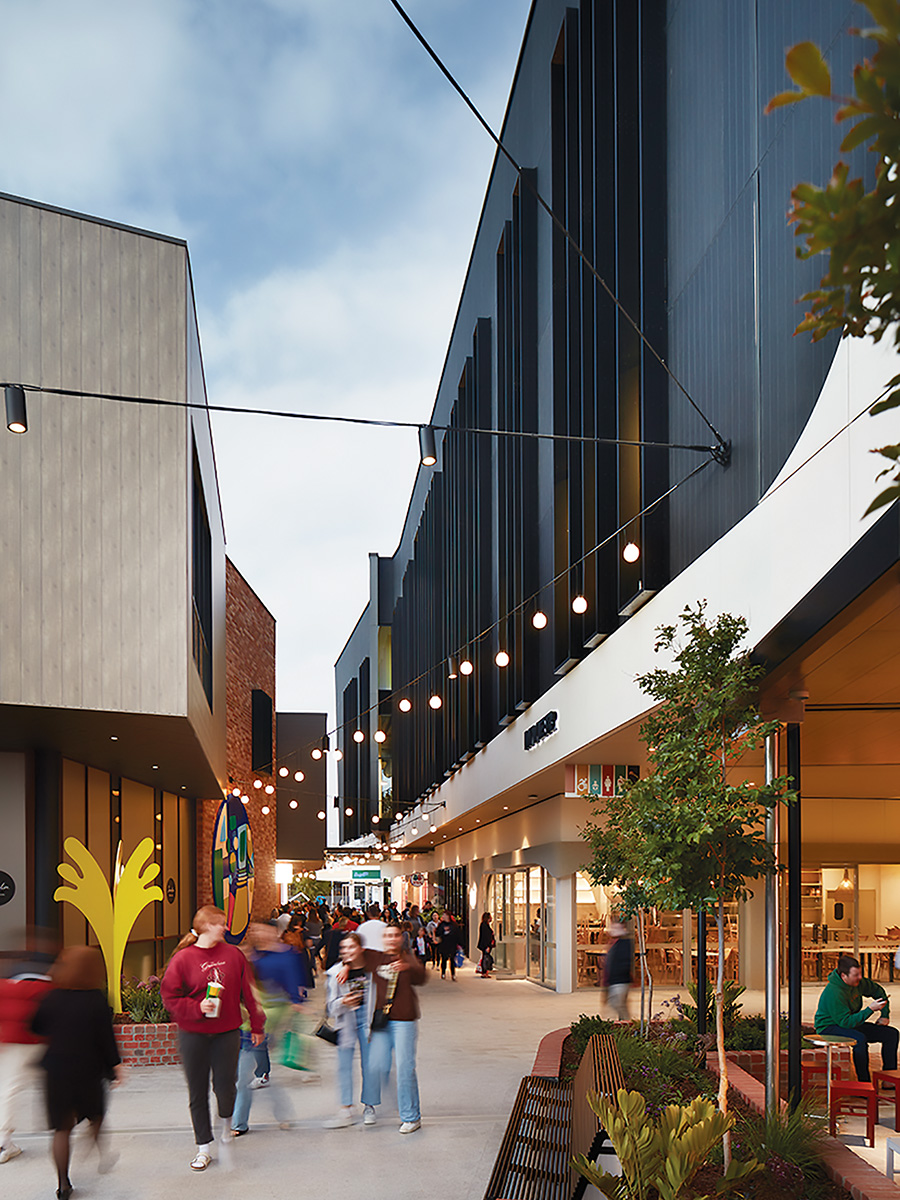
Karrinyup Shopping Centre, Perth
So, what might the experience look like? When we consider some of the above ideas together, possibly a mixed-use precinct that has a good foundation of coherent mixes that talk to each other at varying times throughout the day – not necessarily that the place ‘has it all’, all of the time, but rather that its uses have a strong, underlying, purpose.
The purpose of creating a place that feels safe and busy even during those quiet days, when most people won’t venture out is great, but what if it goes off?
Well, as I stated before, then we have a fantastic ‘problem’ and an opportunity to expand the community.
That said, it needs to be done in a respectful manner so as not to undo the very principles that give a place its true soul and purpose.
This article was first published in SCN Vol. 40 No. 3, 2022.



